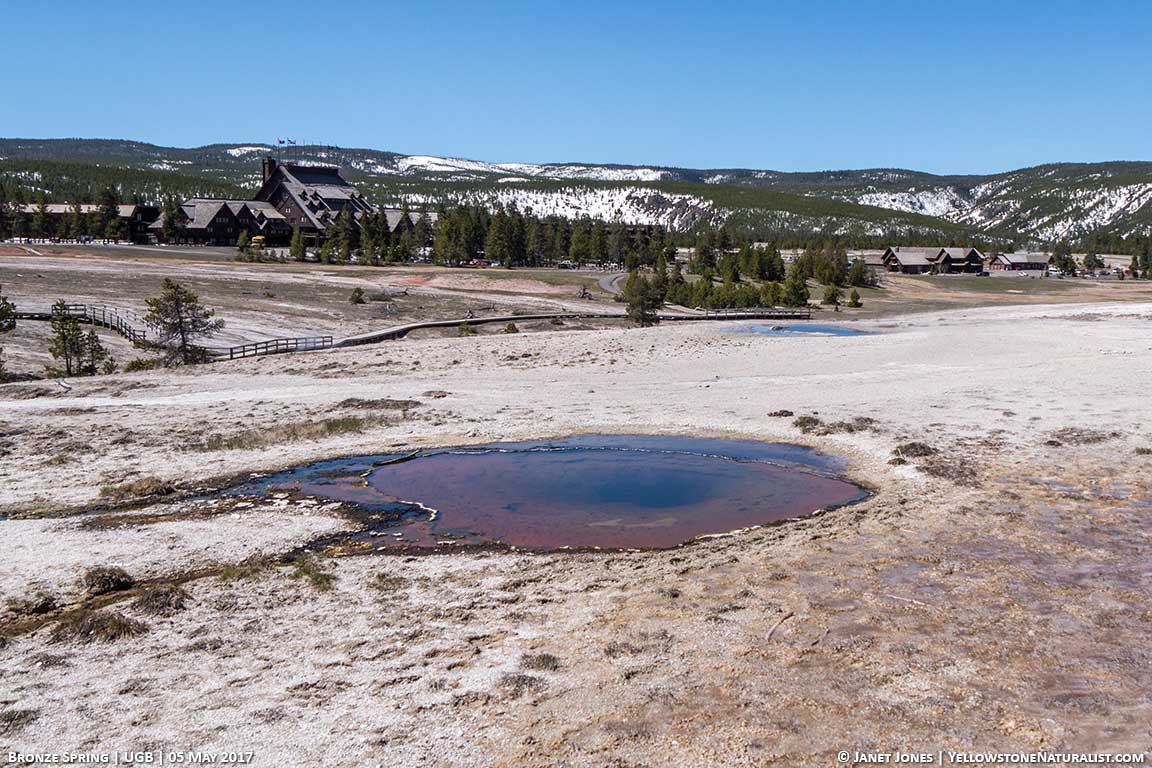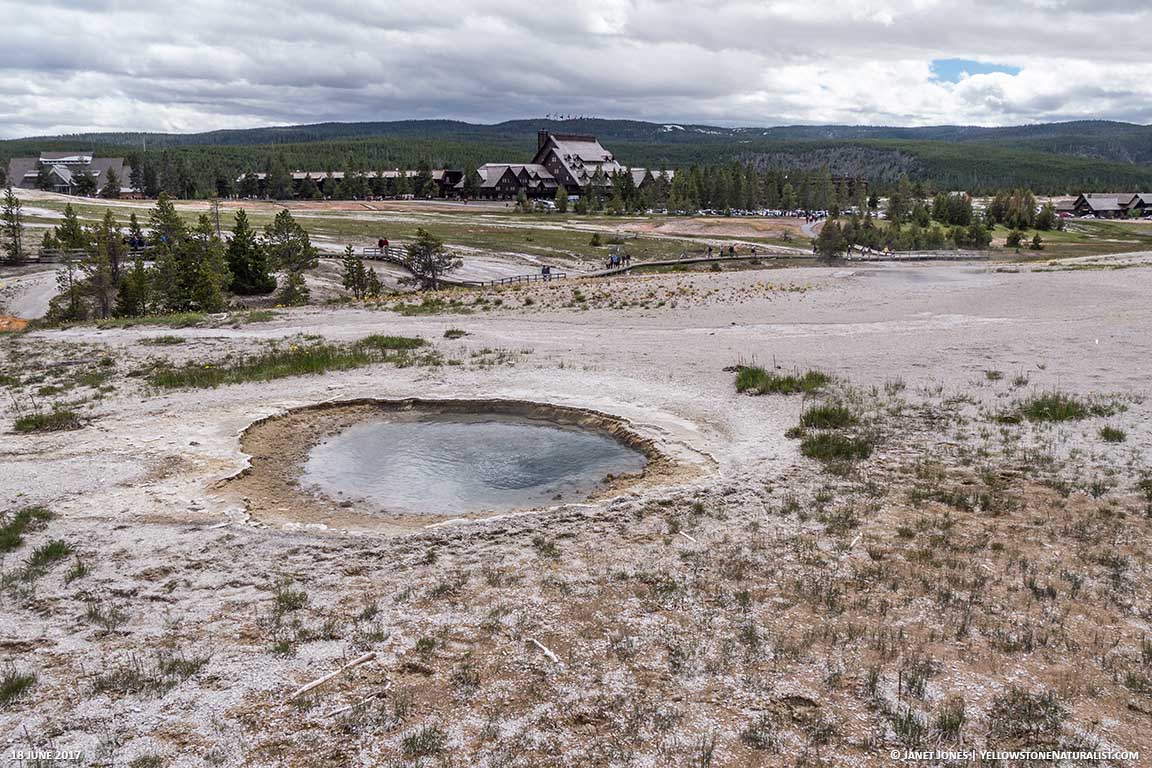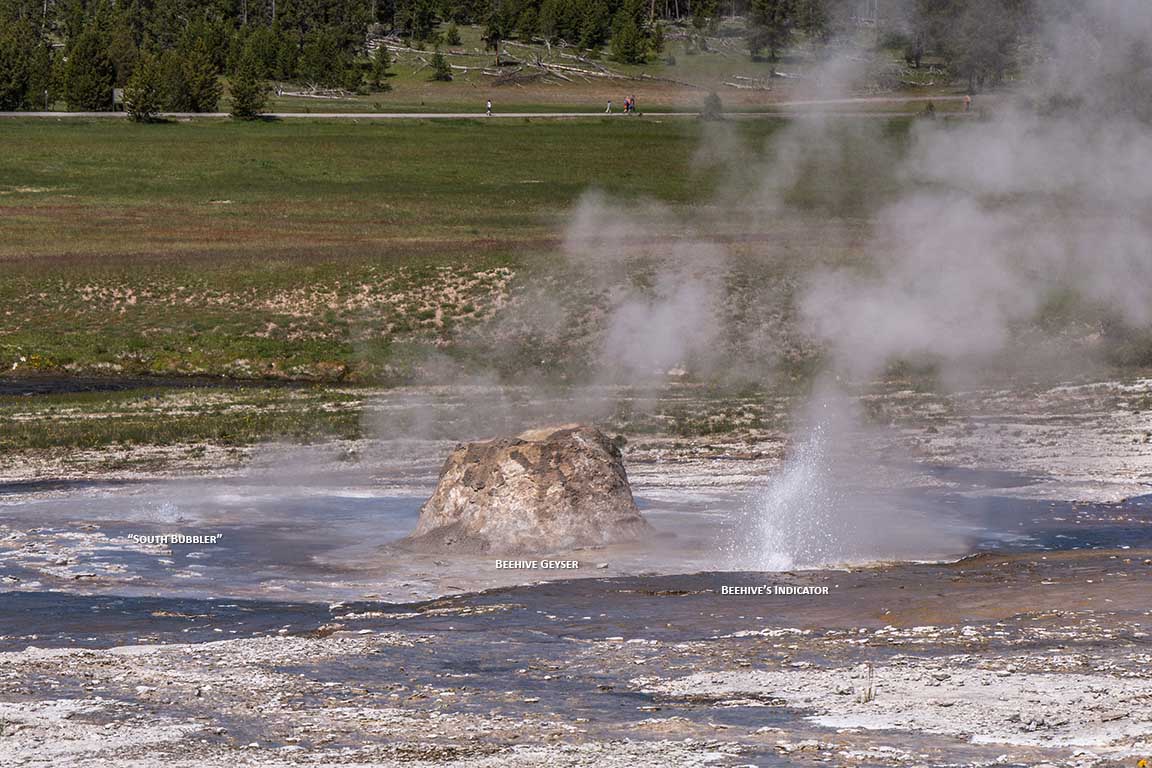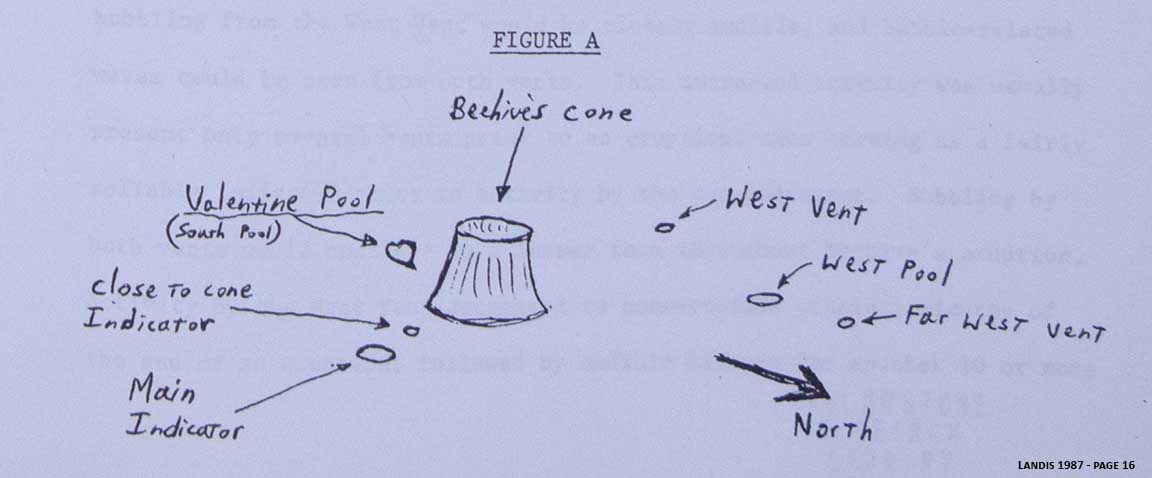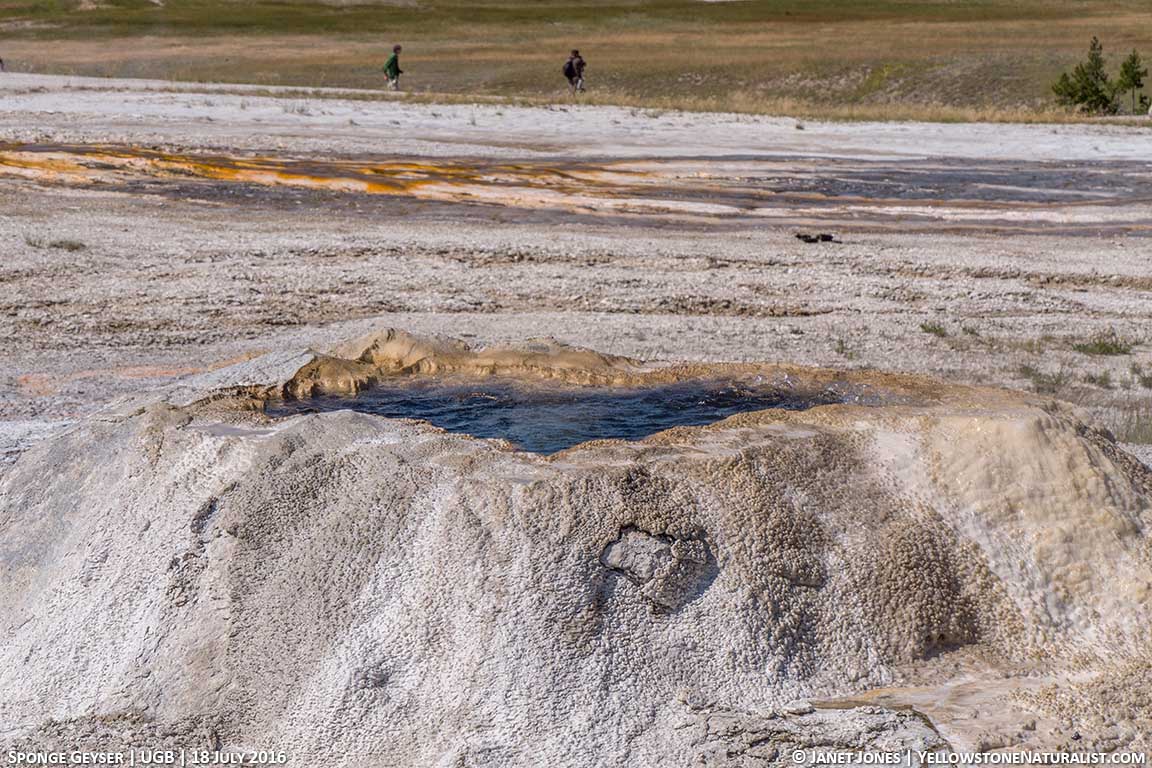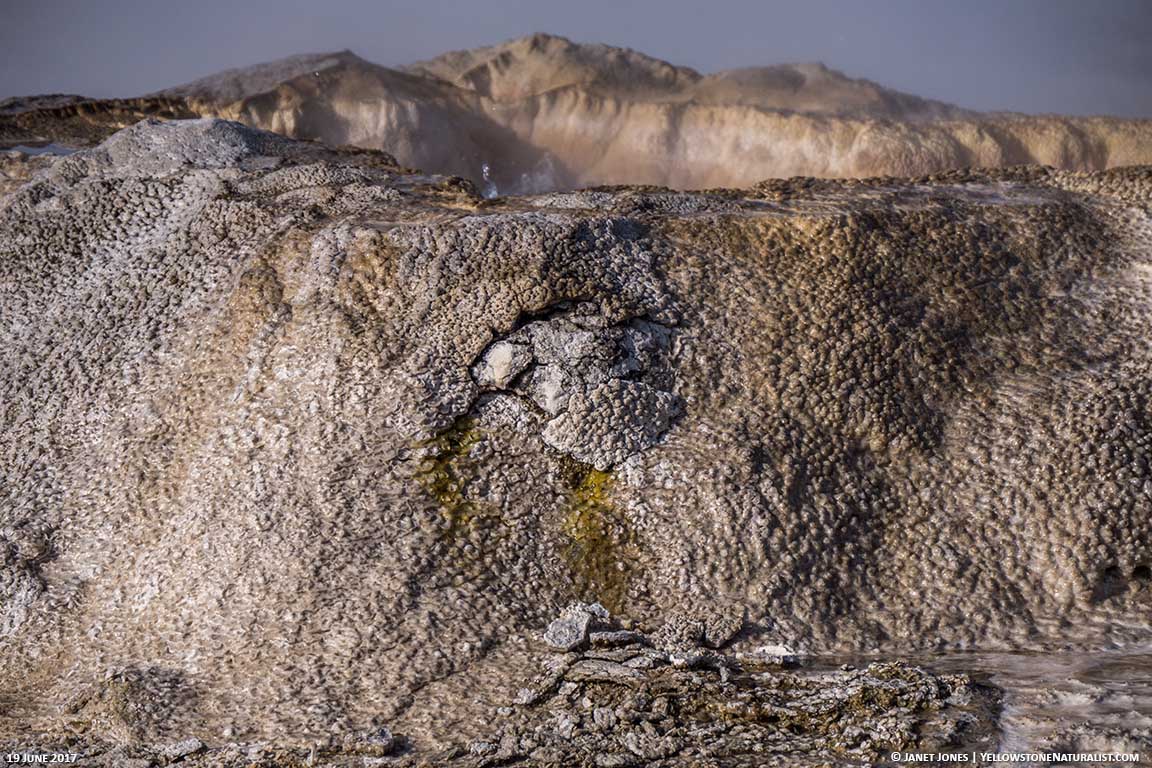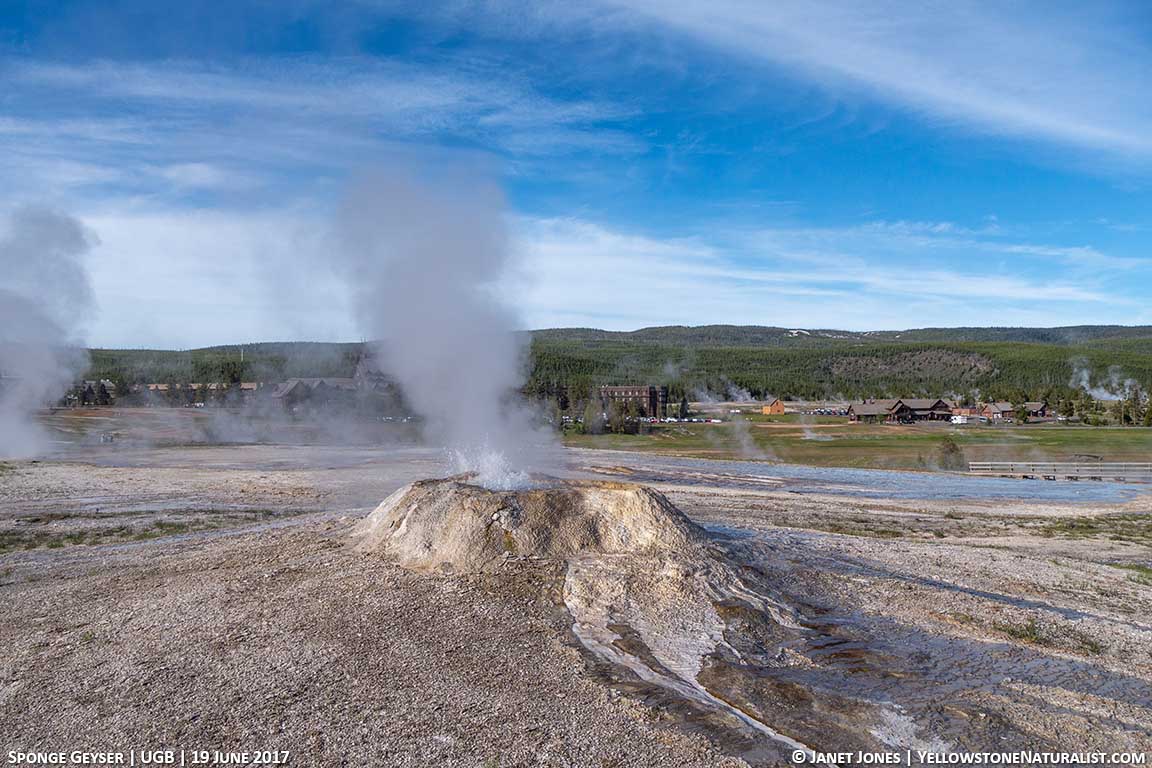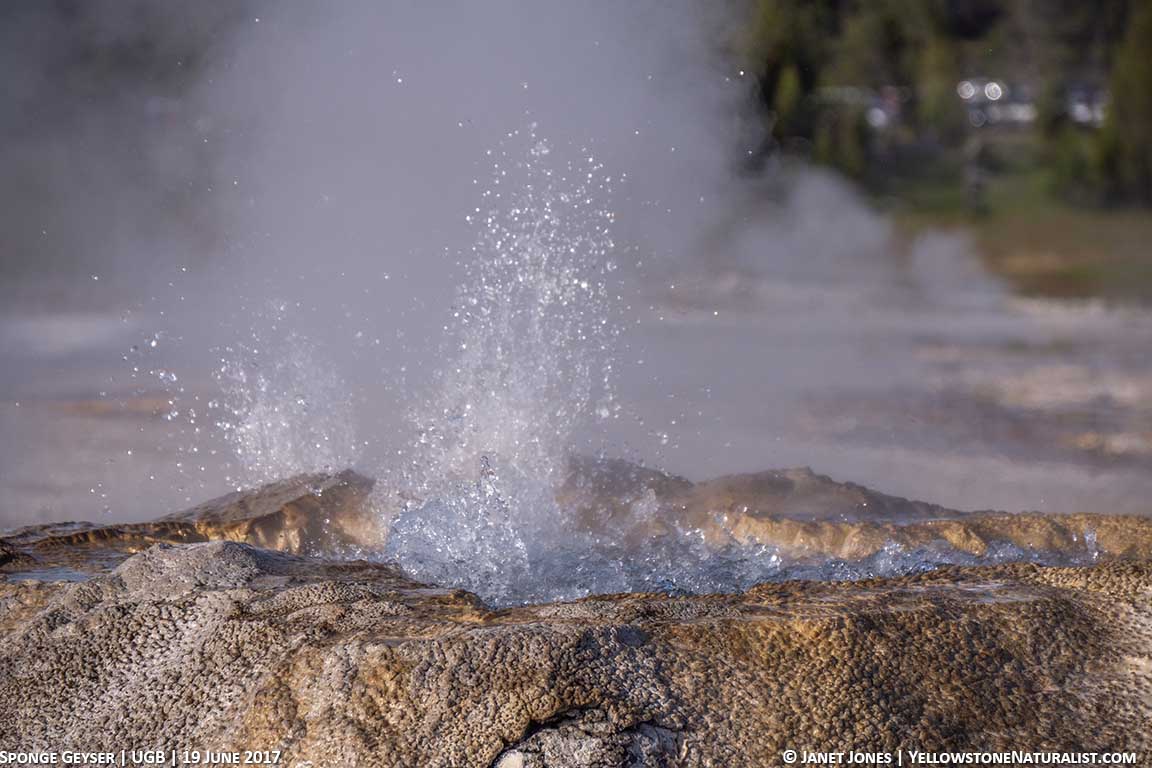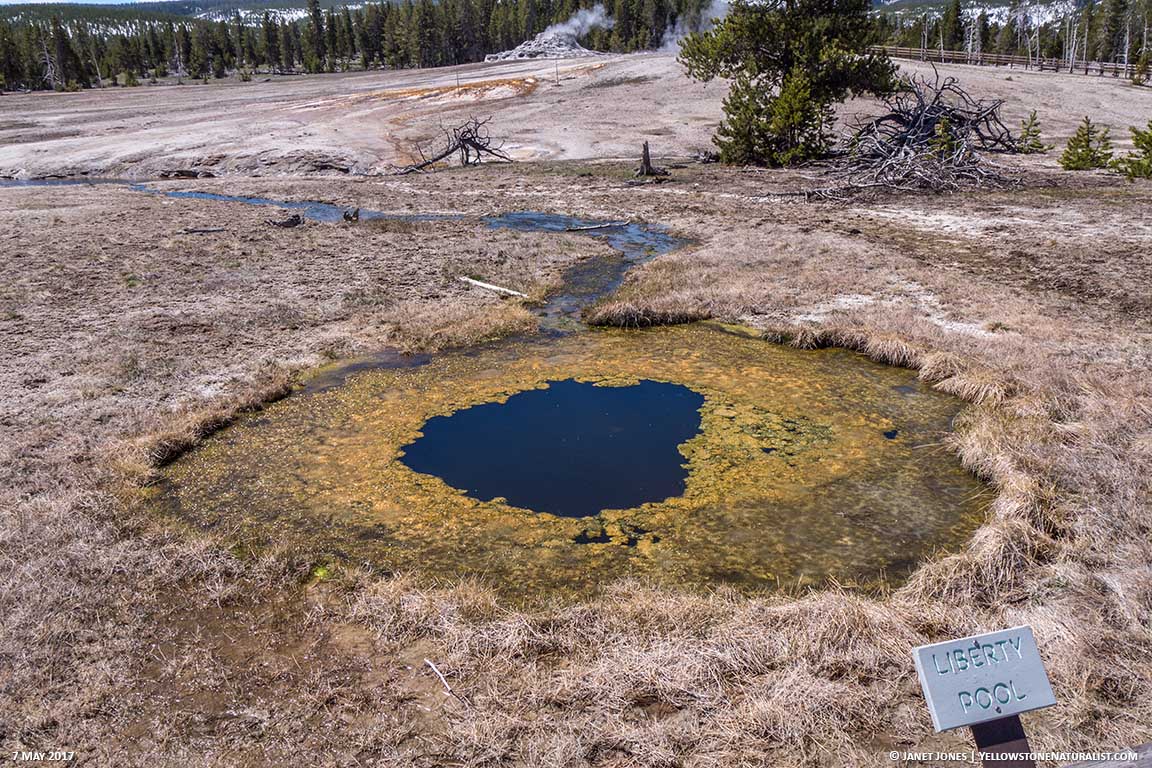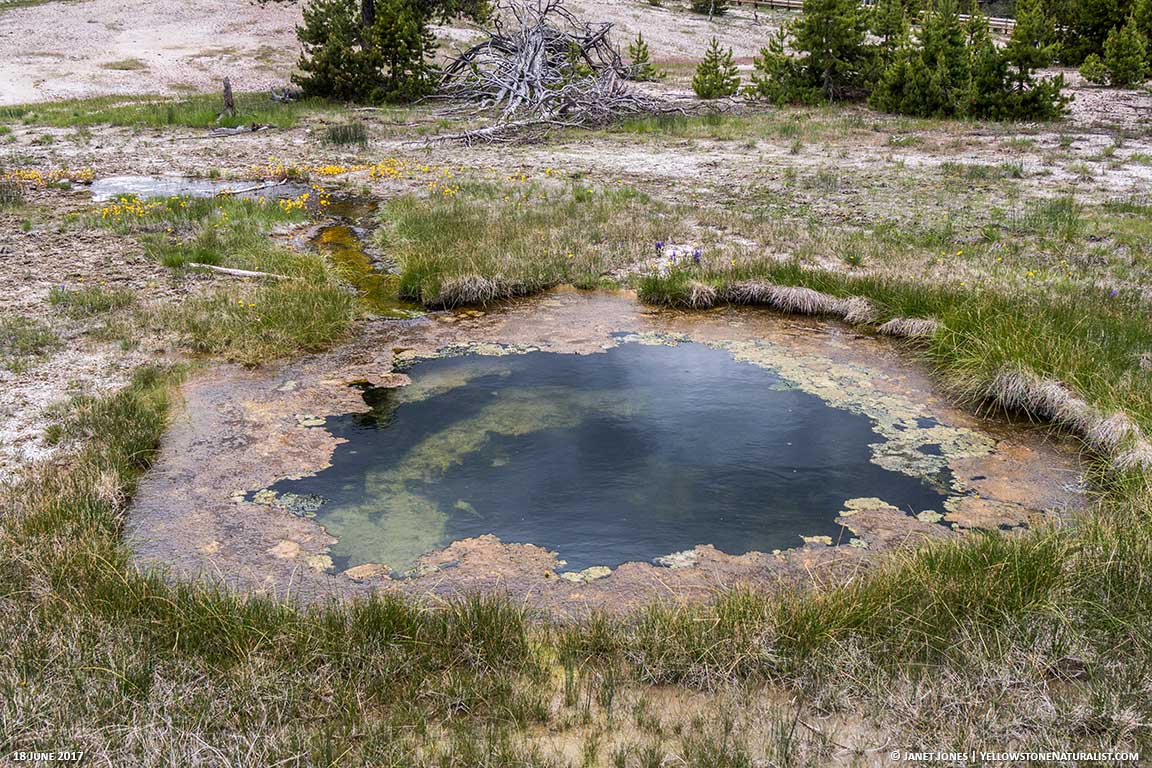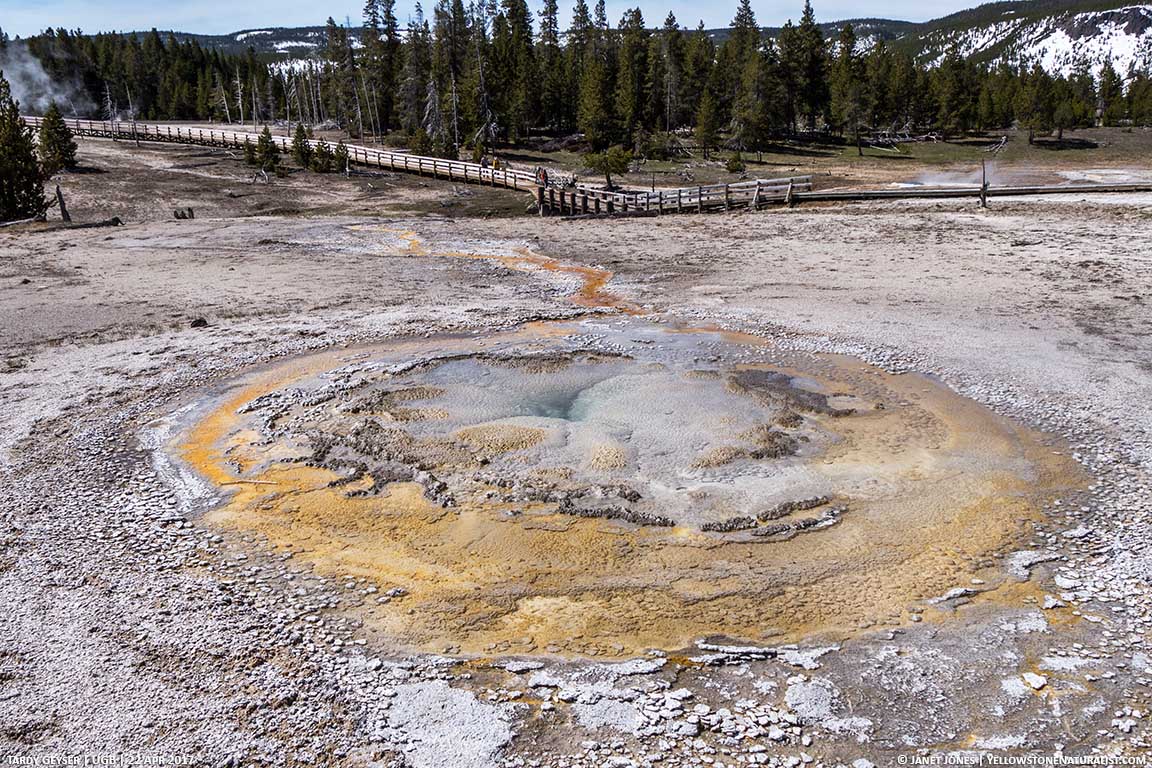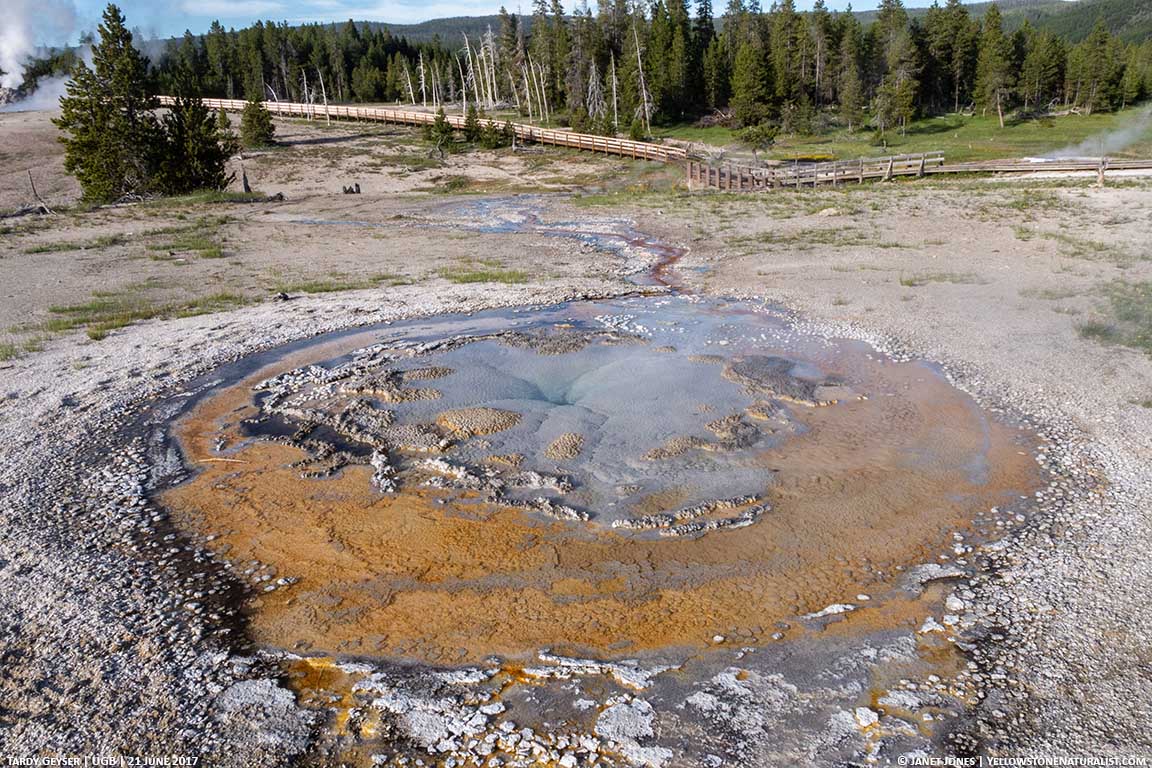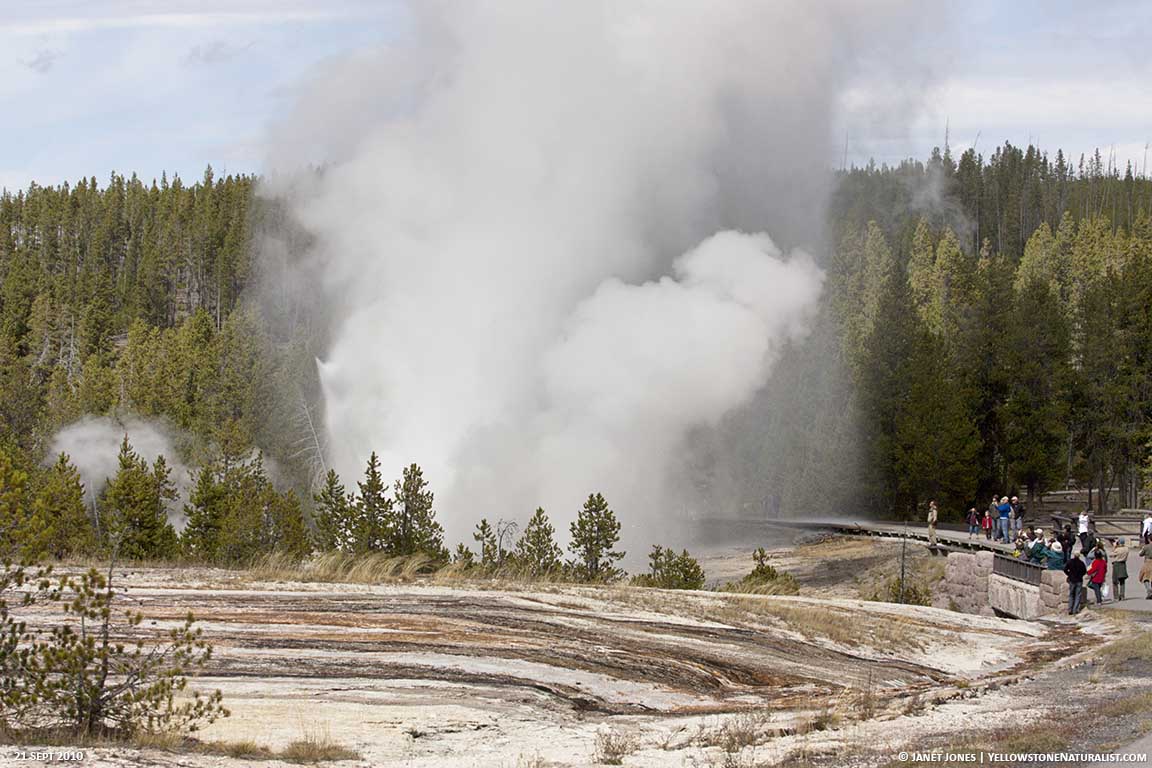Upper Geyser Basin Late June 2017
I recently spent three nights in the Old Faithful area and four delightful days spent taking notes on what I saw and visiting with friends. While I still need to go through more files, I’m starting to take more of the approach I do to scrapbooking and just find something and add it in – that anything done (as opposed to avoided because it’s not perfect) is good enough.
So here are a few observations:
UPPER GEYSER BASIN – GEYSER HILL
BRONZE SPRING
Only one other geyser gazer mentioned to me that they’d noticed that Bronze Spring is giving off a very strong sulfur smell. Usually that means a more acidic spring, but that’s not been the result of chemical analysis done in the past for this area. Sulphide Spring, yes. That’s been more acidic and given off the same strong smell when it didn’t overflow years ago. And Bronze Spring isn’t overflowing right now either.
In fact, it’s been below overflow the past few times I’ve been in the park. Also – while I can’t smell the sulfur in the air as strongly now (been in the geyser basins too much and the ability to smell sulfur degrades the more you’re around it), I’ve noticed quite a few people talking about the smell in the air as far away as Improbable Geyser.
So, just something to note.
“BEEHIVE’S SOUTH BUBBLER”
I’ve heard a couple of people mention that Beehive’s Bubblers are going. There are actually multiple ones, and the one seen recently is the South Vent according to Tara Cross and also in a book in the Research Center in Gardiner, Hydrothermal Observations in Yellowstone National Park by Phil Landis. (Published in 1988 with observations from 1987).
One of the theories I heard both sides of is that the South Bubbler erupts not long before the main indicator. And while that’s what I witnessed, others have said they see it on and off long before the Indicator Geyser for Beehive begins to erupt. So…just here’s a photo of what I witnessed, and the sketch done by Phil Landis to help everyone watching this stay on the same page.
SPONGE GEYSER
I sat at Sponge Geyser one morning to write in my journal while also waiting for the call of water in Beehive’s Indicator. It’s water is still cycling up to the top and back down out of sight about every minute. Taking in a few cycles, it was easy to see that some are more robust than others – with some 1.5 to 2 foot splashes on a few. Seems like there’s a pattern here that some observations might help pinpoint if anyone was interested.
Also, the area on the cone facing the boardwalk that’s had some spalling occur over the past year has expanded some and now has a trickle of water coming out of it that’s steady enough to grow some microbes there. Definitely a spot to watch.
And, the UTF (Unnamed Thermal Feature) next to Sponge and close to the boardwalk seems to have heated up again.
FARTHER DOWN BASIN
LIBERTY POOL
I’m fairly certain I saw Liberty Pool completely free of microbe debris earlier this year, but may not have gotten a photo. But it has been heating up – or at least getting hot ‘burps’ of water that have dislodged chunks of the microbe mat more than usually seen when walking past. Just a small change to note and check on the next time I head in.
SAWMILL GROUP
The Sawmill Group of geysers is still not behaving as we’ve seen it in recent years. Spasmodic Geyser seems to be still firmly in control while Sawmill Geyser, Penta Geyser, Churn Geyser, Twilight Spring, Oval Spring and Tardy Geyser are either sitting with water levels that rise and fall in conjunction with Spasmodic Geyser or continually overflow. “Nifty Geyser” is also still active, but doesn’t appear to me to be a strong as earlier in the season. So that brought the question to mind of whether this is the beginning of a shift from this long pause from typical behavior seen in recent years, or not.
I waited at Tardy Geyser a couple of times with the intent of catching some of the small splashes it’s been doing and finding out just how often they show up. The first time I found the splashes about 45 seconds to about a minute apart. But the second time it was a full twelve minutes without a splash – though about every minute the water might well up a bit more strongly or there might be the ‘firehole’ type flash deep down by the vent. That was when Spasmodic was between cycles. So, the question I have now is: Does Tardy not splash when Spasmodic is below overflow and the bubblers are off?
As always, there are more questions than answers. And more time needed to spend observing – maybe someone will take the time to do that before I get another chance to get in there for that – and before this group goes back to its Sawmill or Penta/Churn modes. In the meantime, the microbes continue to thrive.
FAN AND MORTAR GEYSER
Fan and Mortar has been seen twice this year so far – First on June 15 and then early in the morning on June 20. Hopefully this means we’ll have more chances this season to catch this geyser in eruption. Very glad to see it reactivating again this year.
